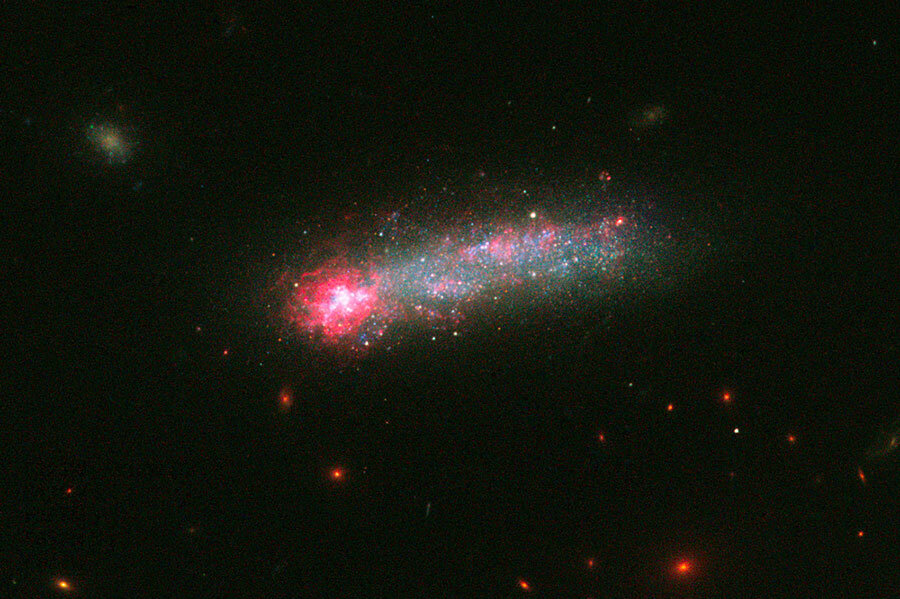Hubble telescope captures dazzling 'skyrocket' galaxy
Loading...
The Hubble Space Telescope has captured a stunning view of a fireworks display blazing up in deep space.
The celestial show comes courtesy of the dwarf galaxy Kiso 5639, which lies 82 million light-years from Earth in the constellation Ursa Major and hosts a frenzy of star birth.
"The dwarf galaxy is shaped like a flattened pancake, but because it is tilted edge-on, it resembles a skyrocket, with a brilliant blazing head and a long, star-studded tail," officials with the Space Telescope Science Institute in Baltimore, which operates Hubble's science program, wrote in a statement.
The majority of Kiso 5639's star-forming action is taking place in the galaxy's head, which is about 2,700 light-years wide. This ramped-up star birth has apparently been triggered by the accretion of gas in this region from surrounding space, researchers said.
The dwarf galaxy's head also features a number of large "holes," which are cavities in the gas blasted out by powerful supernova explosions.
Elongated galaxies such as Kiso 5639 are known as "tadpoles." There were much more abundant in the universe's early days than they are today, scientists said.
"I think Kiso 5639 is a beautiful, up-close example of what must have been common long ago," Debra Elmegreen, of Vassar College in New York, said in the same statement. "The current thinking is that galaxies in the early universe grow from accreting gas from the surrounding neighborhood. It's a stage that galaxies, including our Milky Way, must go through as they are growing up."
Elmegreen is lead author of a new study that's based on observations of Kiso 5639 Hubble made with its Wide Field Camera 3 instrument. The paper has been accepted for publication in The Astrophysical Journal.
The new photo, which was released on June 28, combines Hubble images taken in February 2015 and July 2015.
Follow Mike Wall on Twitter @michaeldwall and Google+. Follow us @Spacedotcom, Facebook or Google+. Originally published on Space.com.
Editor's Recommendations
- Hubble Snaps Bubble for Launch Anniversary | Video
- Gallery: 65 All-Time Great Galaxy Hits
- The Hubble Space Telescope: A 25th Anniversary Photo Celebration
Copyright 2016 SPACE.com, a Purch company. All rights reserved. This material may not be published, broadcast, rewritten or redistributed.







